Dahi Handi : Human Pyramid
India
The breathtaking sight existed in the rainy season in Mumbai.
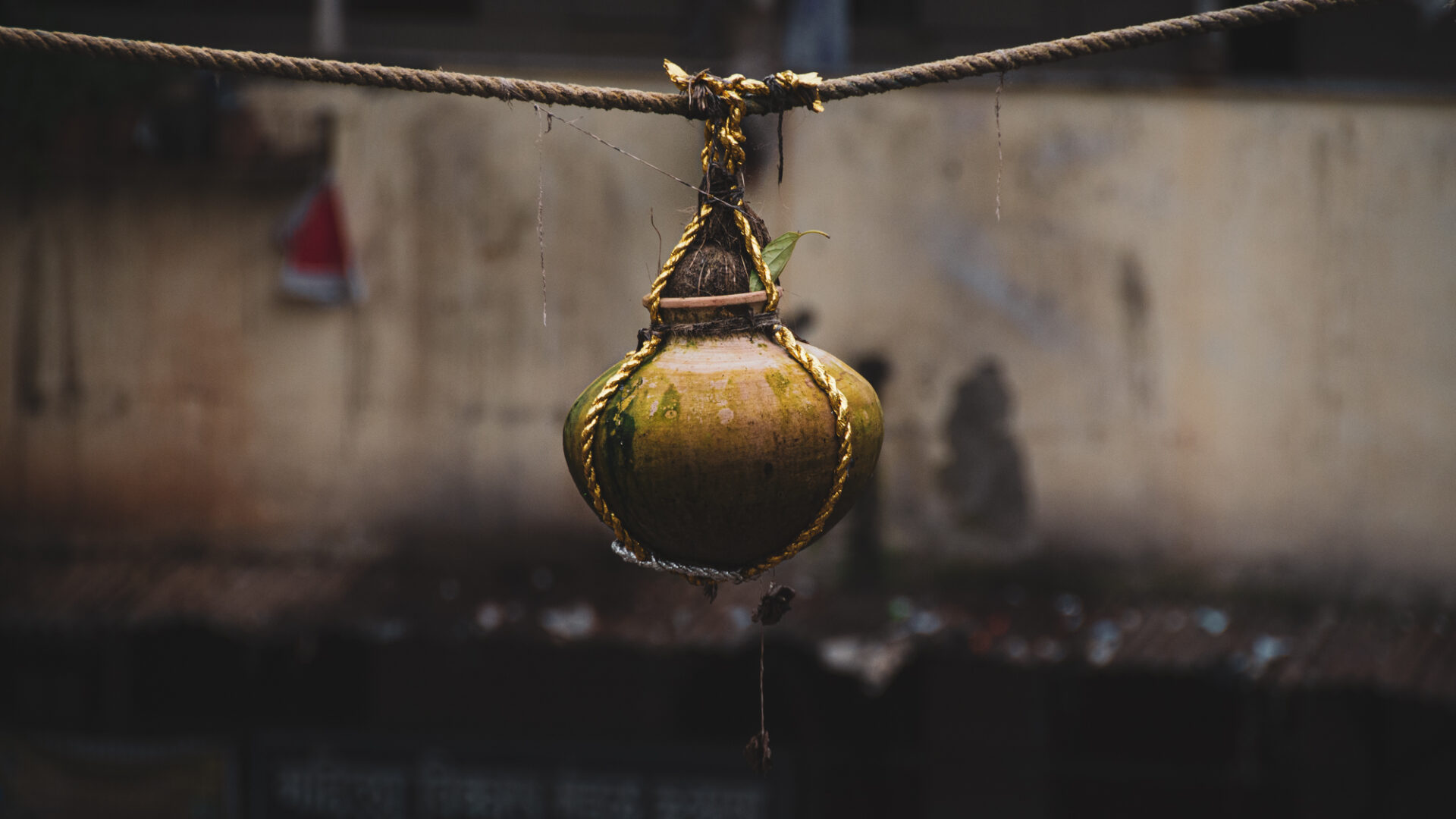
The central spectacle of Dahi Handi vividly recreates these legendary adventures. It showcases groups of spirited participants, often young men and boys organized into teams called "Govinda pathaks" or simply "Govindas," who collaborate with remarkable coordination and energy to construct towering human pyramids. Their collective goal is to strategically ascend these precarious formations, layer by agile layer, to reach and triumphantly break a small, often colorfully decorated earthenware pot (the "Handi") suspended at a considerable and challenging height. This exhilarating endeavor demands not only exceptional teamwork and trust among the participants but also a remarkable blend of agility, balance, and unwavering courage as they climb to dizzying heights.
Furthermore, the festival is deeply intertwined with Hindu mythology, allowing both the energetic participants and the enthusiastic spectators to forge a tangible religious connection and partake in moments imbued with sacred significance. The act of breaking the Handi symbolizes the triumph of community spirit and the playful victory reminiscent of Lord Krishna's childhood antics.
The atmosphere of the Dahi Handi celebration is undeniably vibrant and electrifying, pulsating with energetic vibes that resonate through the streets. The festivities are a sensory feast, featuring the rhythmic beats of traditional music, the graceful movements of dance performances, and elaborately decorated parades that wind their way through towns and cities. The air is thick with anticipation and the exhilarating cheers of the massive crowds as the human pyramids sway and often dramatically collapse in their determined attempts to reach and break the coveted Handi. The triumphant moment when the pot finally shatters, showering the participants with its contents (often symbolic of butter or curd), is met with an explosion of joyous celebration.
Overall, Dahi Handi is much more than just a sporting event; it's a cherished cultural spectacle where participants and spectators alike are swept up in a wave of collective joy, palpable excitement, and a profound sense of unity that transcends religious and social divides. It's a vibrant testament to teamwork, courage, and the enduring power of community spirit, all while playfully celebrating a beloved aspect of Hindu mythology.

As the festival season approaches, practice sessions for Dahi Handi can be seen all around the town.
This team is formed by locals gathering together.
Veterans and young participants, as well as those passing on and receiving the skills, come together as one to take on the festival.
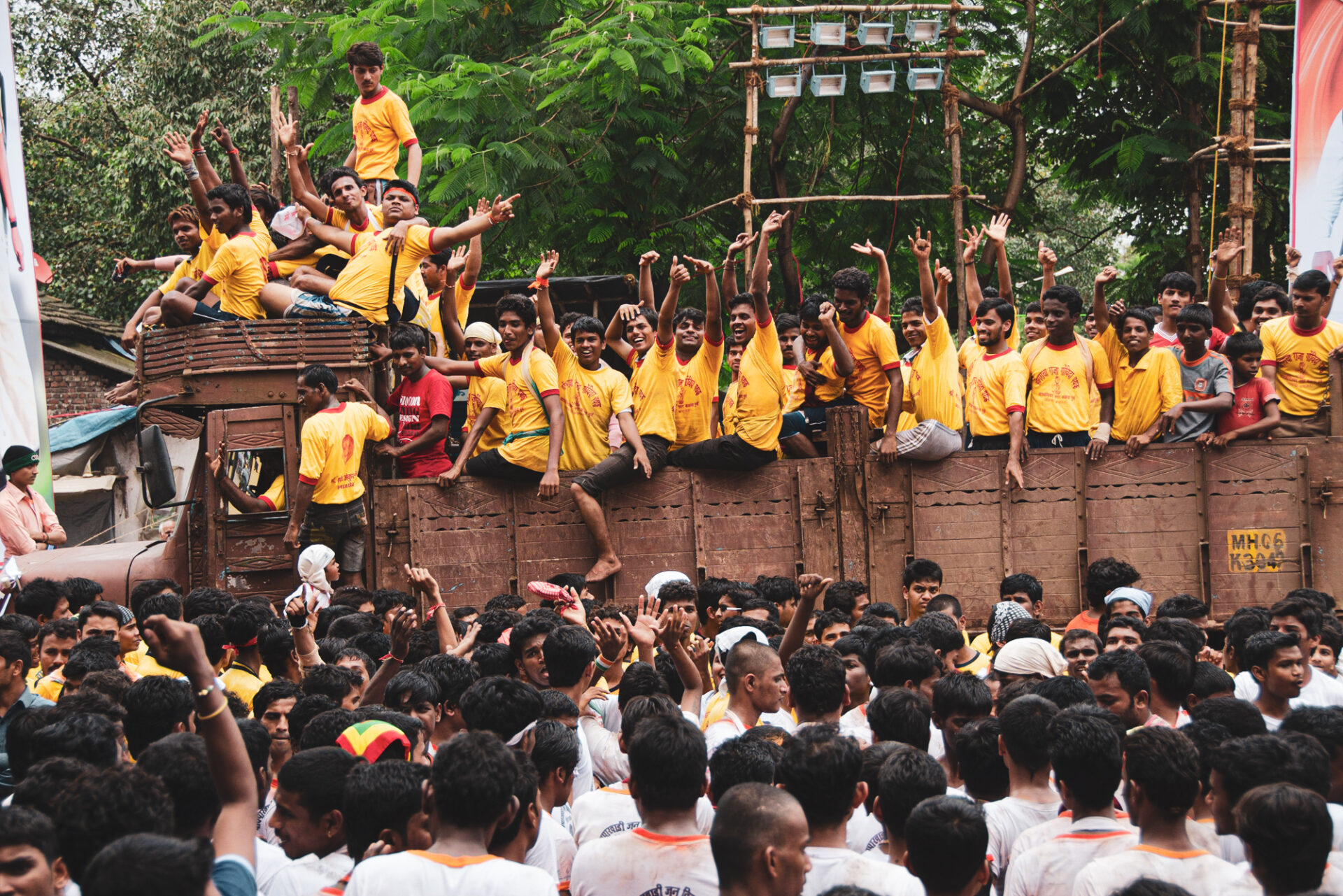
Venues for building human towers are set up throughout the town.
The teams move from one location to another using trucks and buses, repeatedly constructing human towers and then moving on.
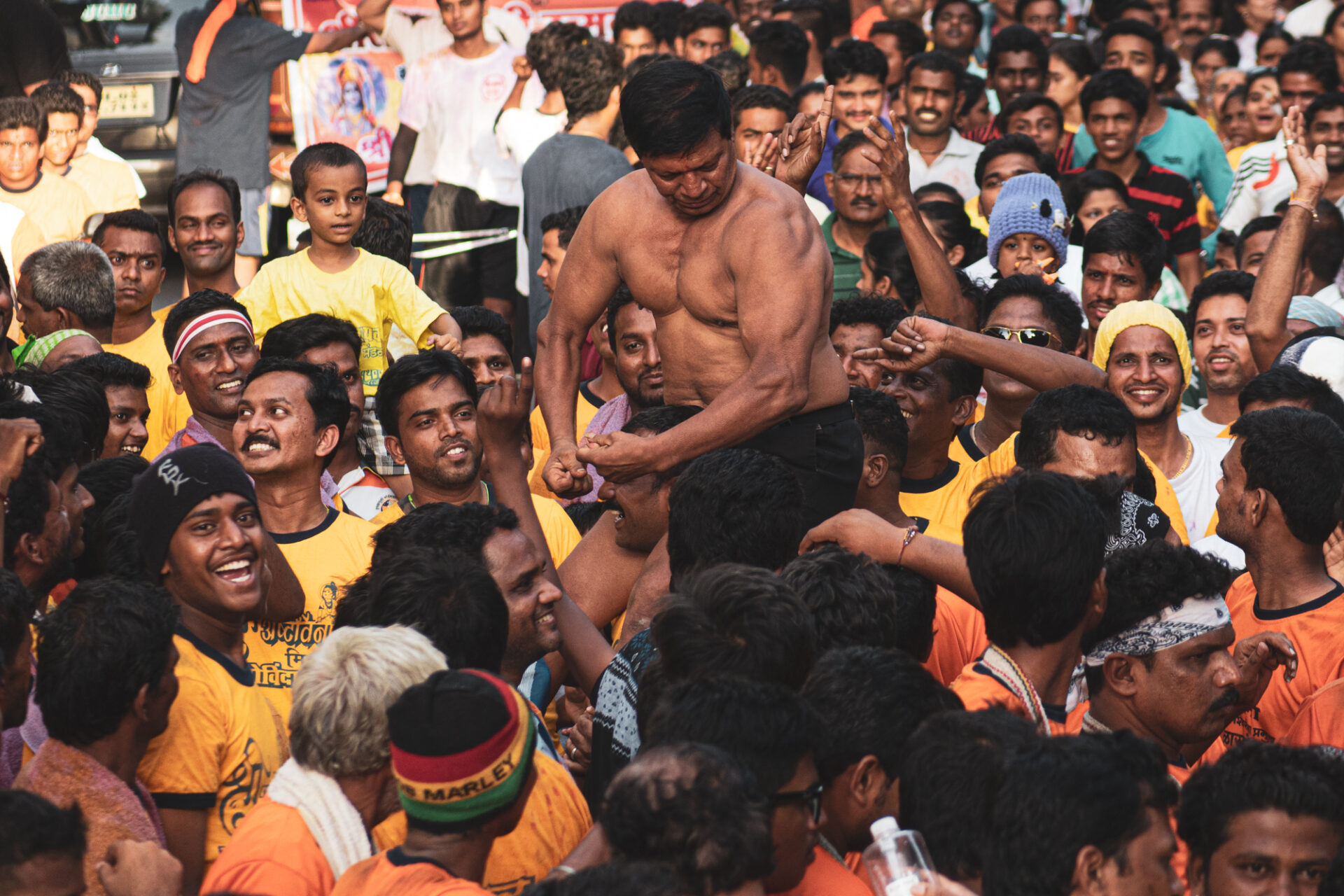
The individuals forming the base of the human tower must have strong and resilient bodies.
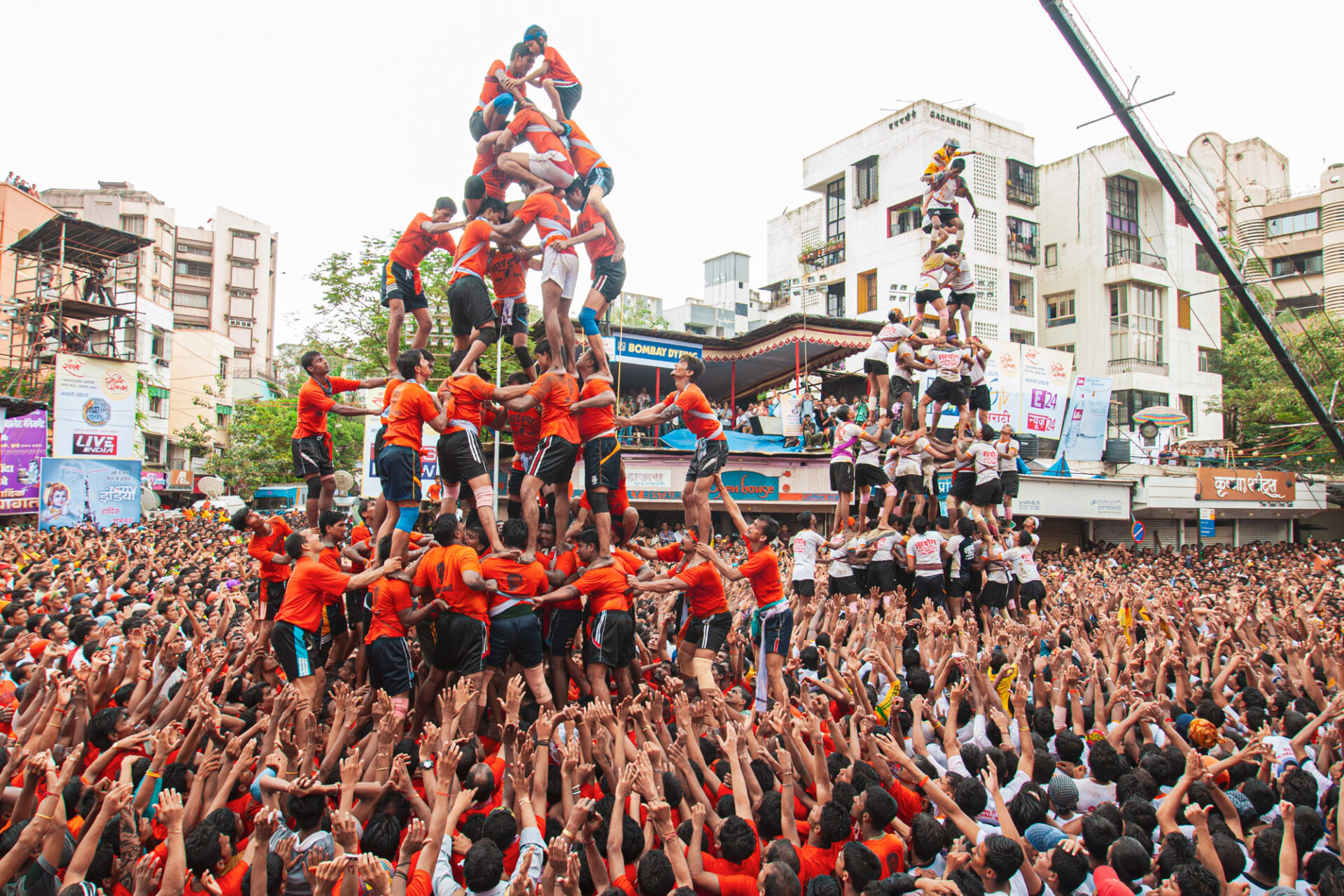
If you are in an apartment, look down from the third floor.
That's the height of the top.
The raised hands are there to catch what is coming down.
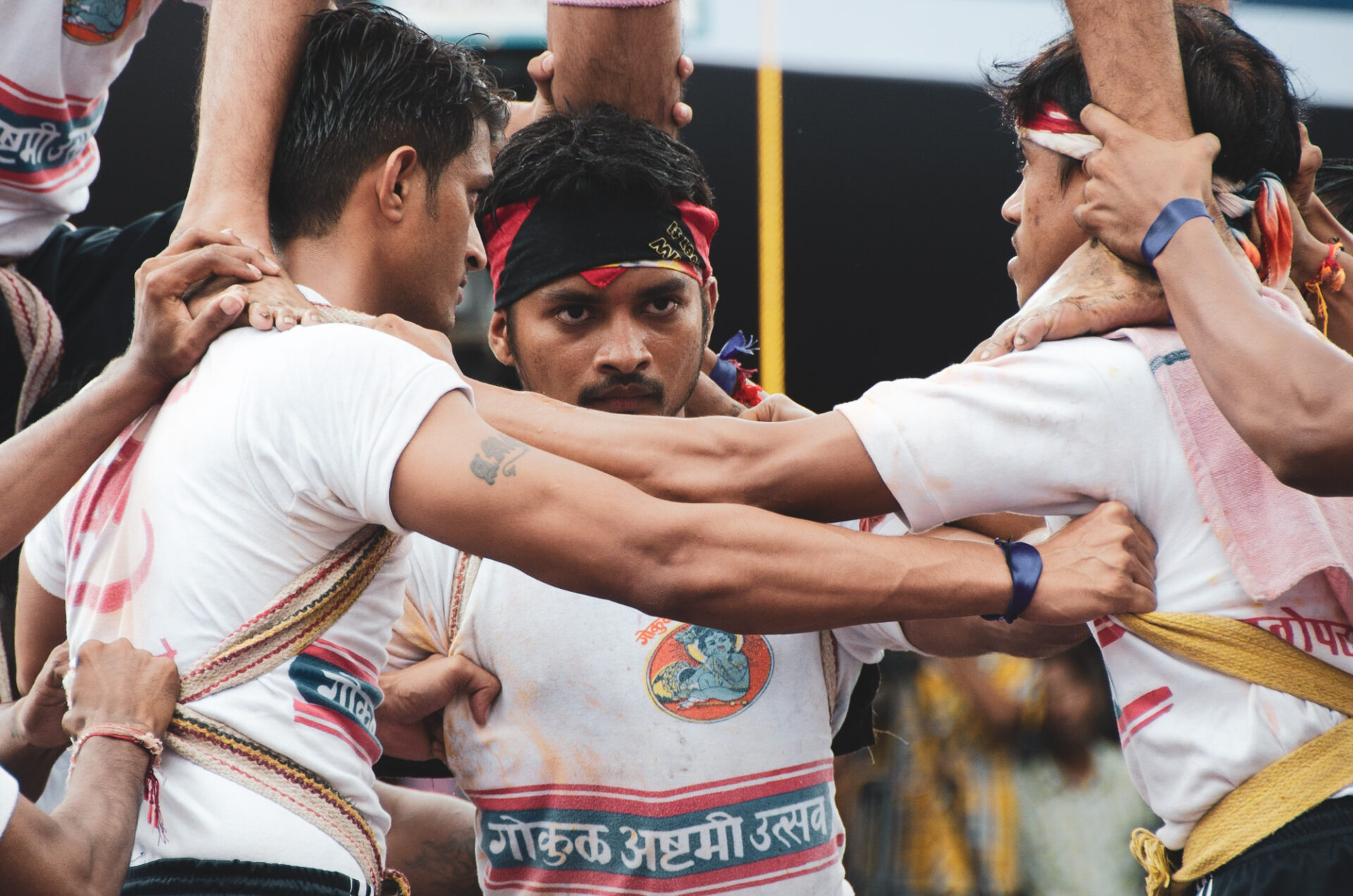
tremble slightly

At the top of the human tower, a lightweight child is chosen.
Several years after this footage was captured, it became mandatory for the child standing at the summit to wear a harness, eliminating the risk of falling.
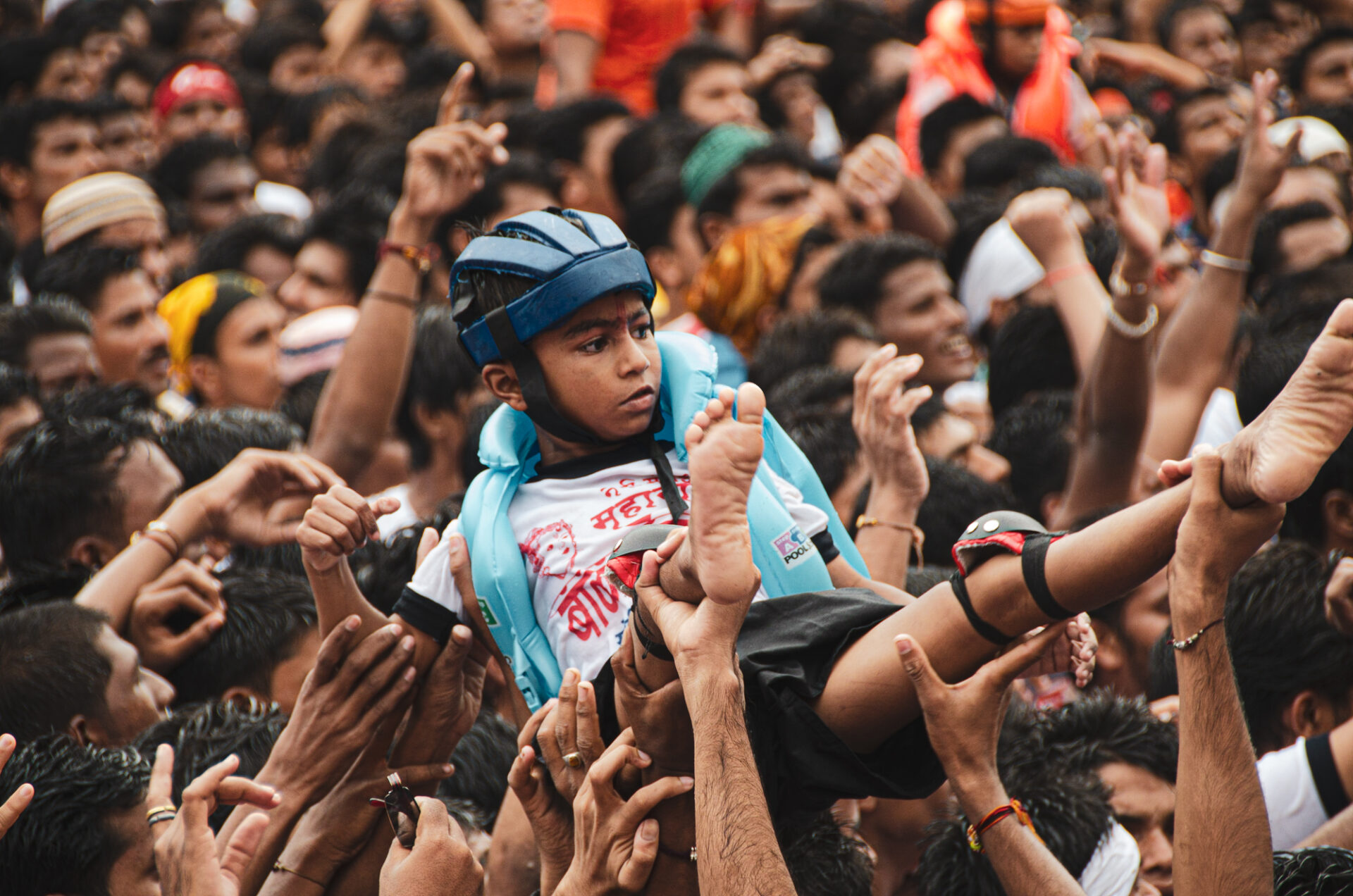
The boy who was caught and helped after falling.

He was trapped underneath and fainted after the fall.
Broken bones are common, and sometimes people die.
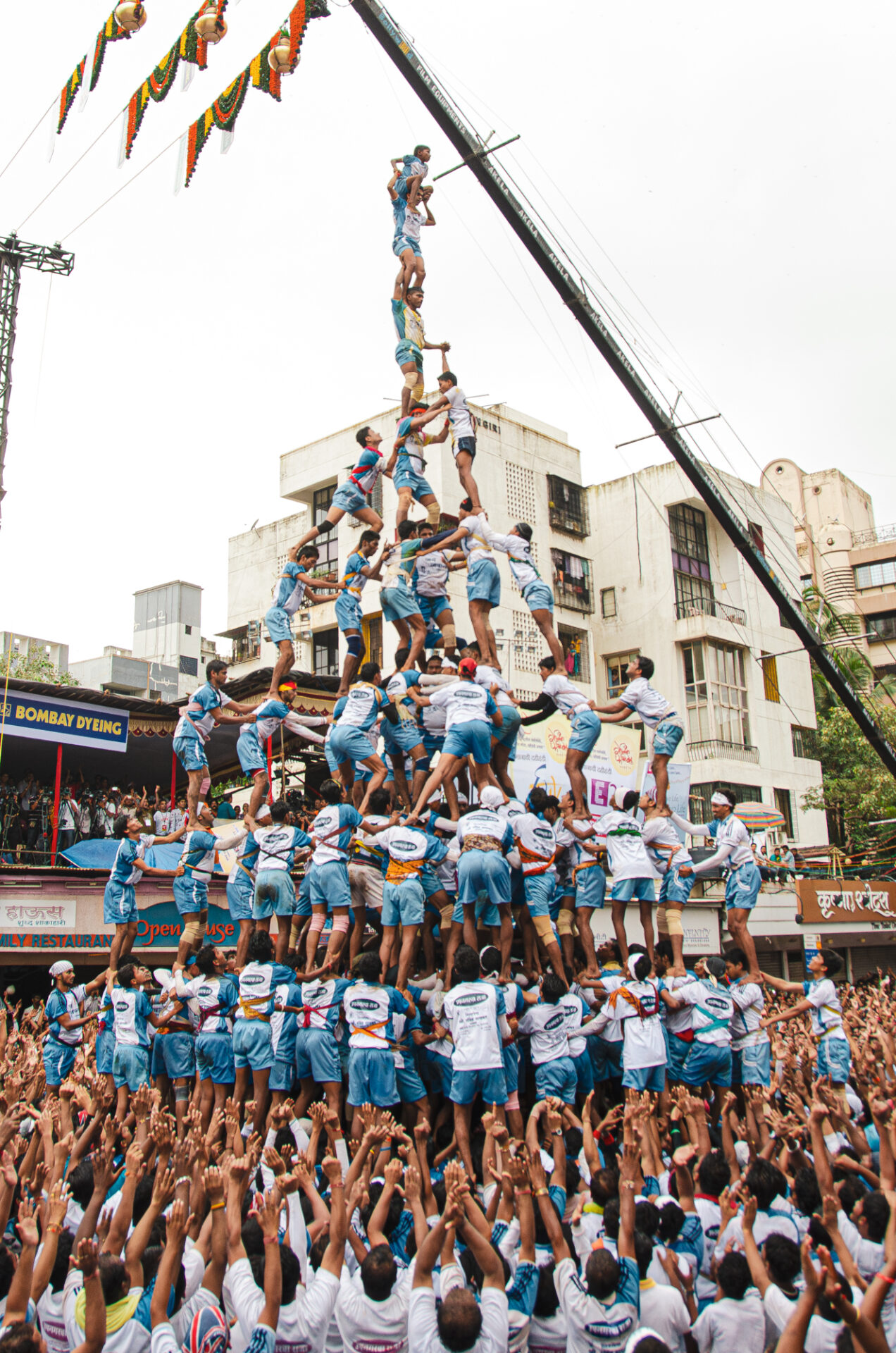
On the third attempt, they finally succeed in creating a nine-tier human pyramid.
Teams capable of building such a tall human tower are few and far between.
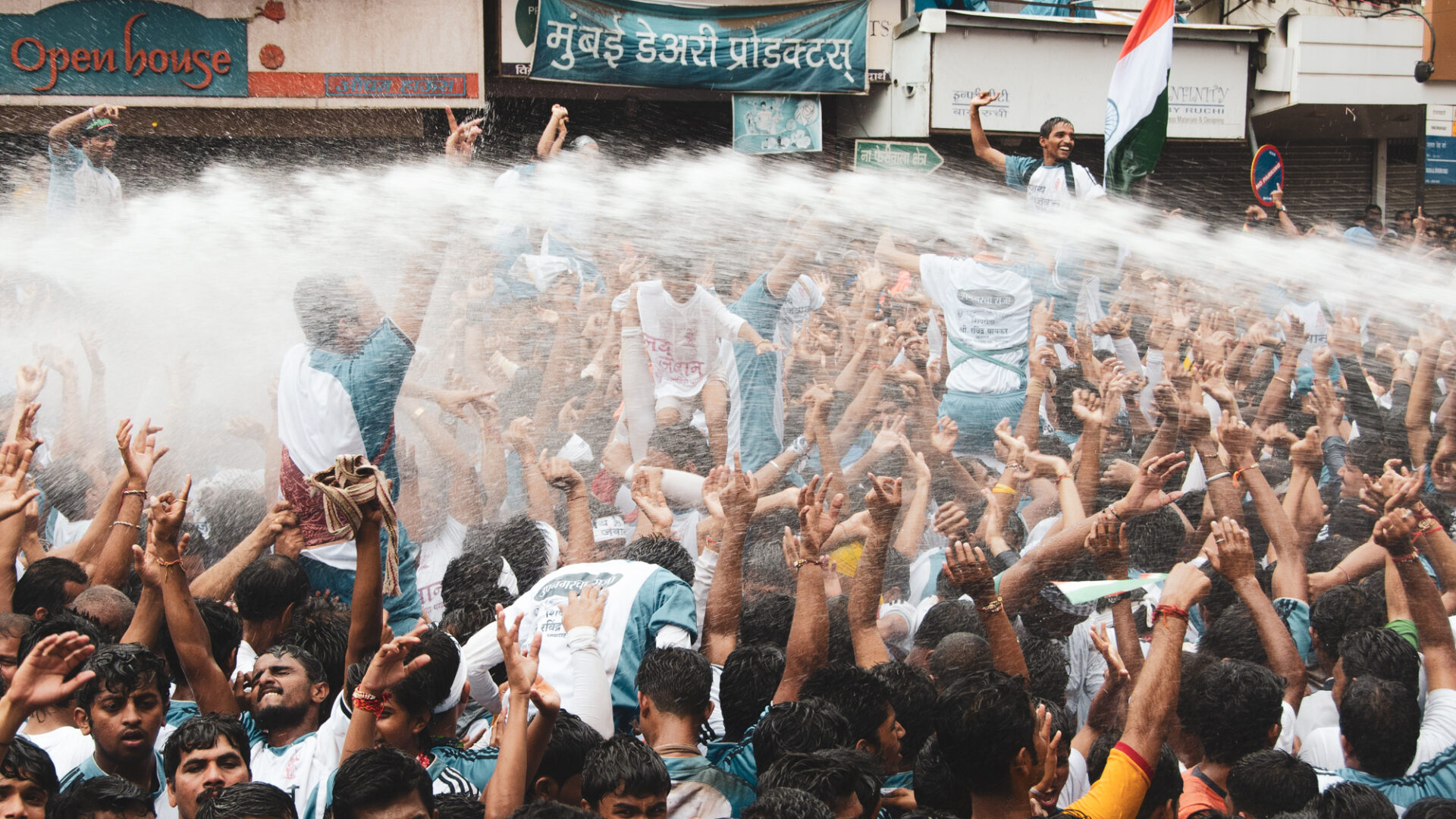
After the success, water is showered, and everyone celebrates with loud music, dance, and song.
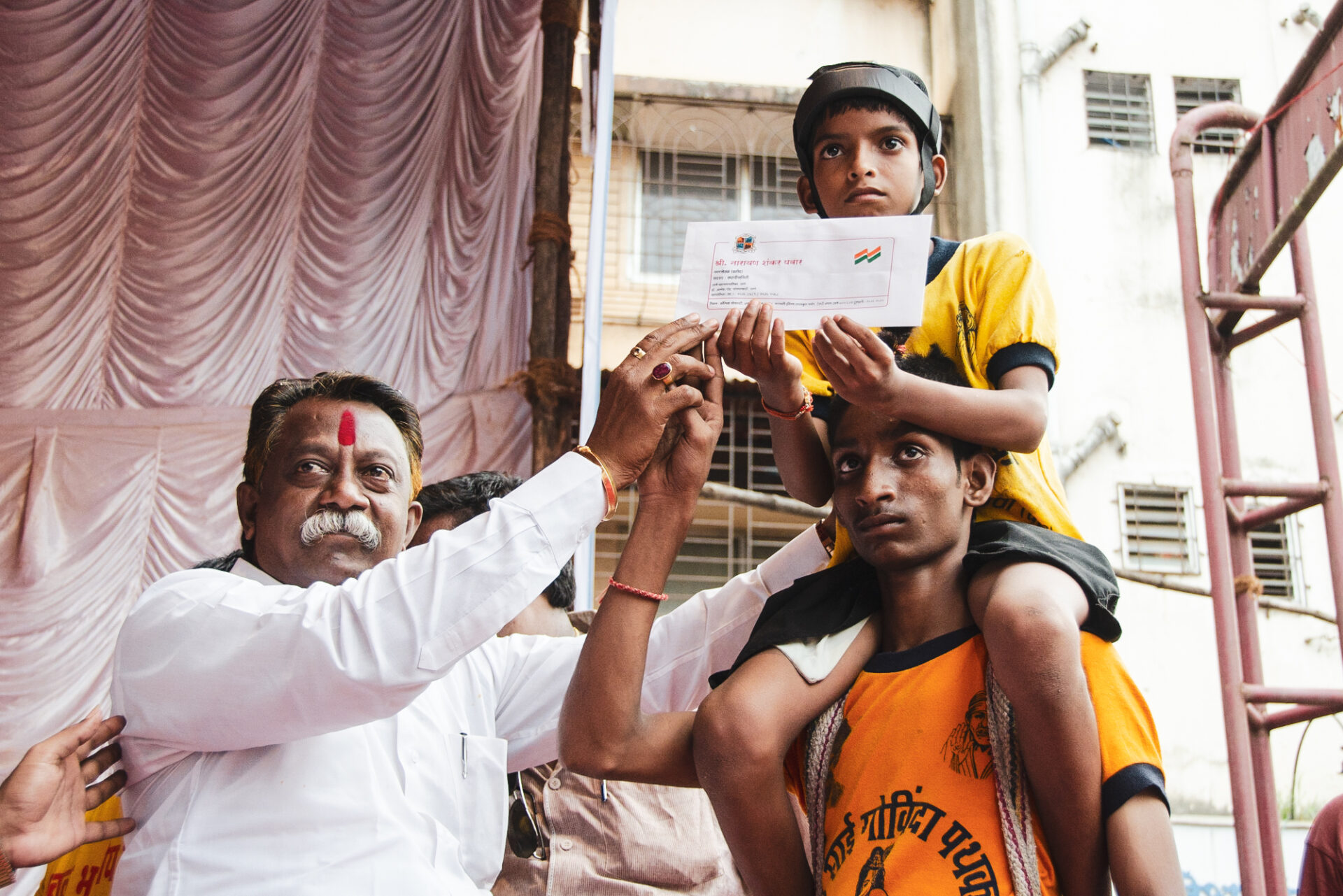
Upon successfully completing the human tower, the team is awarded an honorary trophy and cash prize from the sponsors.
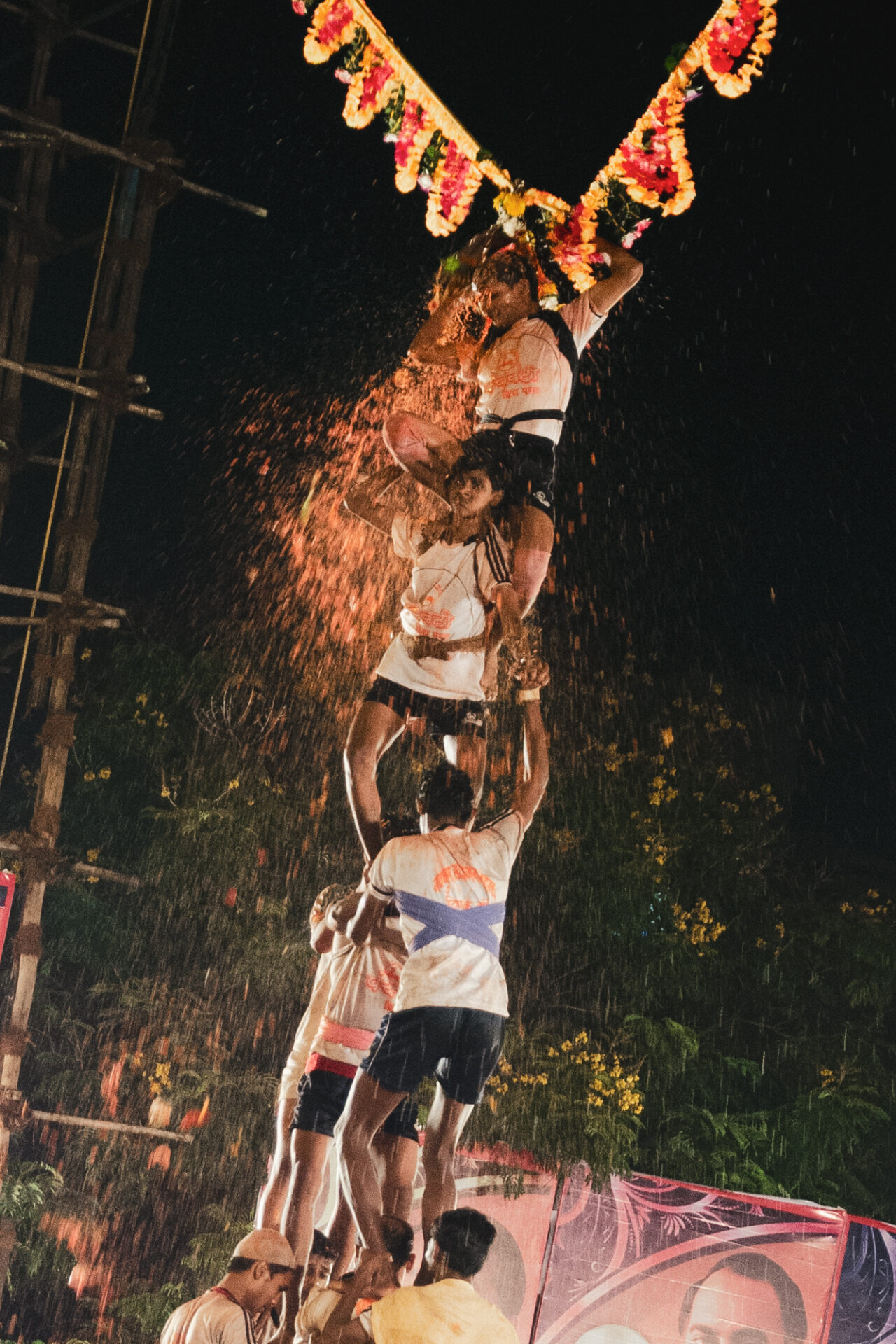
When the suspended pot is successfully broken by hand, dairy products, flower petals, and incense flow out.
The festivities continue into the night.
When I mentioned my interest in Dahi Handi and my visit to Mumbai, they frowned. And then, indirectly, they conveyed to me: That festival is uncivilized and noisy, so people like us don't participate.
It seems they don't look favorably upon those participating in the festival, not belittling the festival or the deities themselves.
There are various factors such as white-collar, blue-collar, education, residential area, income, religion, and more. And even in modern times, caste isn't just about differentiation but seems to foster discrimination.
Ironically, this issue forms a uniquely appealing culture that captivates me.
However, it must be noted that this issue is not exclusive to any one country. It's not just religion but also wealth, status, power, ideology, and political beliefs that can escalate into war, so it's a problem that cannot be easily resolved.
Moreover, approaching things from different perspectives leads to new discoveries, inventions, and values, facilitating our evolution.
Anyway, it's puzzling why this festival isn't globally renowned. What an amazing team sport that values trust and unity.
And it provides thrills and excitement even for spectators like me.
India continues to enchant me more and more.
